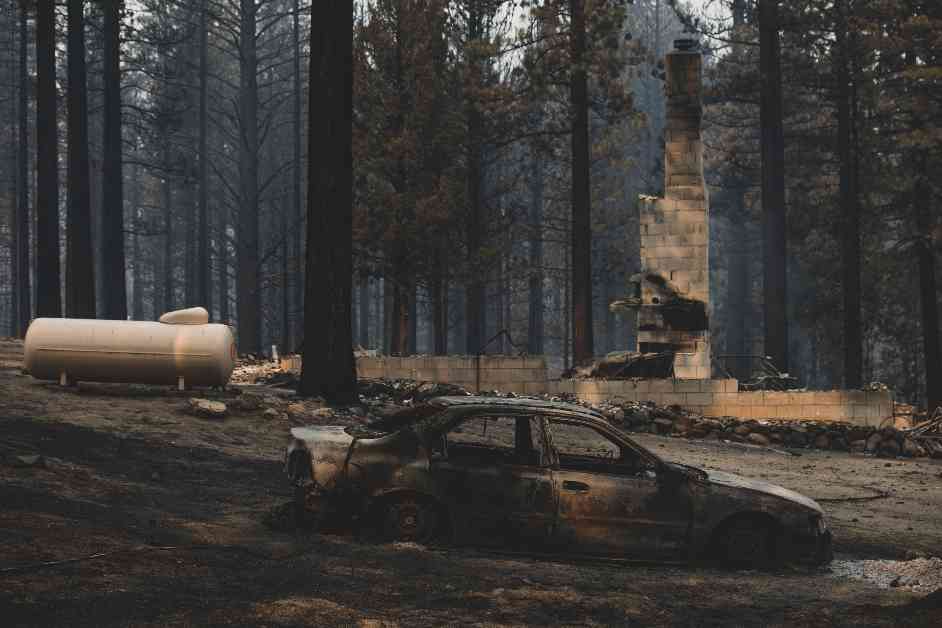Climate change is no longer just in the air, water, and land of Nevadans. It is also in their home insurance policies.
From record heat in Las Vegas to wildfires on 138 acres in Sparks, Nevadans have been reminded that summers will be longer and hotter. This includes their home insurance policies.
Nevadans have seen a 21 percent increase in home insurance rates since 2018. This could be due to higher prices in lumber, which raises construction costs, and an increased risk of wildfires in certain regions – but essentially, many of the issues of rising home insurance costs are caused by climate change.
Scott Kipper, Nevada Insurance Commissioner, said the state is working on ideas to mitigate the rising insurance prices, although he said, “I don’t think these ideas are fully concrete.”
The official added that the Nevada Division of Insurance could raise these concerns when the Legislature reconvenes in February.
Residents of northern Nevada, in particular, are feeling the pressure of higher home insurance rates.
More than 200 residents of Incline Village who attended a community forum on June 28 organized by the Nevada Division of Insurance indicated that they are not receiving help, as their rates are increasing between 100 and 1,000 percent.
The problem is global, according to Alice Hill, Senior Fellow for Energy and Environment at the Council on Foreign Relations, and former Special Assistant to the President during the Obama administration.
View of the moon over a peak burned by the Tamarack Fire in Douglas County on July 28, 2021. (David Calvert/The Nevada Independent)
Greater risk, higher cost
Darcie Goodman Collins, Executive Director of Keep Tahoe Blue, was one of the people who had to evacuate her home in South Lake Tahoe when the Caldor fire approached Nevada in 2021. Although her house was not burned in 2021, it was consumed in the Angora fire in 2007 and subsequently rebuilt.
“Especially in my neighborhood, where many residents returned and rebuilt, and had already been through this once,” said Goodman Collins. “For them, it was very traumatic to think, ‘Well, we did this once. Are we going to lose our home again?'”
Goodman Collins’ experience is becoming increasingly common. The number of wildfires has doubled in the last 20 years, according to Kacey KC, Nevada State Fire Marshal. On average, about 500,000 acres of land burn in Nevada each year.
Catastrophic weather events lead more people to contact their insurance companies, and as damages increase, so do the rates.
View of an empty bay after mandatory evacuations close South Lake Tahoe on September 1, 2021. Photo by: Christian Monterrosa.
National effects
Nationally, Hill pointed out that major insurance companies like State Farm are leaving, especially from places like California and Florida where extreme weather events are becoming more common.
The insurance companies that remain are smaller and, as a result, have less money and capacity to deal with large-scale events. This creates the need for residual insurers – also known as insurers of last resort, to service high-risk areas when others do not.
If a large-scale event occurs that these insurers cannot handle and future premiums cannot cover, the state could be responsible for bailing out the companies. This could mean higher taxes for state residents even if they are not affected by a major weather event.
Nevada does not have an insurer of last resort, but creating one is being considered.
Nevada is among the states where it is legal to not have home insurance. However, most mortgage lenders require home insurance, so the bank has a safety net if the house is destroyed before someone has fully paid for it.
As climate change continues to create different circumstances for residents of northern Nevada and neighboring communities in California, officials indicated that a characteristic of Nevadans emerges when faced with a disaster: community.
“I generally refer to that as the strength of Nevada,” said Taylor Adams, President and CEO of the Western Nevada Development Authority. “But within that strength, there is also a community-focused kindness. And I hope everyone here focuses more on ‘we’ rather than ‘me’.”



